
Anne Marsh Caldwell, also known as Anne Caldwell O'Dea, was an American playwright and lyricist. She wrote both pop songs and Broadway shows, sometimes working with composer Jerome Kern.

Beatrice Gladys Lillie, Lady Peel, known as Bea Lillie, was a Canadian-born British actress, singer and comedic performer.
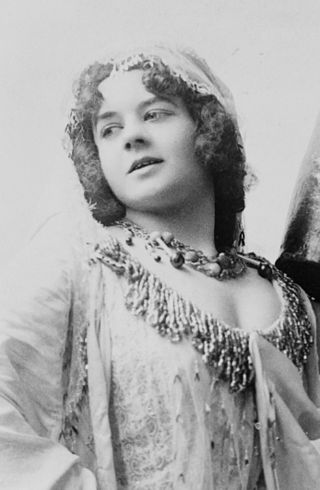
Eva Tanguay was a Canadian singer and entertainer who billed herself as "the girl who made vaudeville famous". She was known as "The Queen of Vaudeville" during the height of her popularity from the early 1900s until the early 1920s. Tanguay also appeared in films, and was the first performer to achieve national mass-media celebrity, with publicists and newspapers covering her tours from coast-to-coast, out-earning the likes of contemporaries Enrico Caruso and Harry Houdini at one time, and being described by Edward Bernays, "the father of public relations", as "our first symbol of emergence from the Victorian age."

Mary Roberts Rinehart was an American writer, often called the American Agatha Christie. Rinehart published her first mystery novel The Circular Staircase in 1908, which introduced the "had I but known" narrative style. Rinehart is also considered the source of "the butler did it" plot device in her novel The Door (1930), although the exact phrase does not appear in her work. She also worked to tell the stories and experiences of front line soldiers during World War I, one of the first women to travel to the Belgian front lines.
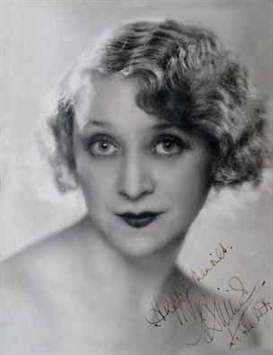
Beatrice "Binnie" Mary Hale-Monro was an English actress, singer and dancer. She was one of the most successful musical theatre stars in London in the 1920s and 1930s, able to sing leading roles in operetta as well as musicals, and she was popular as a principal boy in pantomime. Her best-remembered roles were in the musicals No, No, Nanette (1925) and Mr. Cinders (1929), in which she sang "Spread a Little Happiness".

Trixie Friganza was an American actress. She began her career as an operetta soubrette, working her way from the chorus to starring in musical comedies to having her own feature act on the vaudeville circuit.
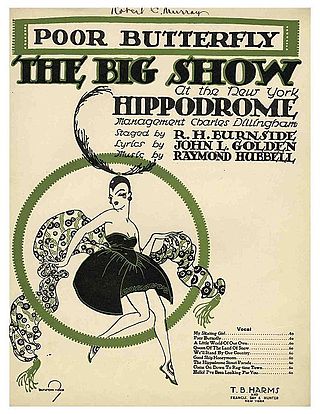
John Raymond Hubbell was an American writer, composer and lyricist. He is best known for the popular song, "Poor Butterfly".

Valeska Suratt was an American stage and silent film actress. Over the course of her career, Suratt appeared in 11 silent films, all of which are now lost, mainly due to the 1937 Fox vault fire.

The Hippodrome Theatre, also called the New York Hippodrome, was a theater in New York City from 1905 to 1939, located on Sixth Avenue between West 43rd and West 44th Streets in the Theater District of Midtown Manhattan. It was called the world's largest theatre by its builders and had a seating capacity of 5,300, with a 100x200ft (30x61m) stage. The theatre had state-of-the-art theatrical technology, including a rising glass water tank.

Robert Hubber Thorne Burnside was an American actor, director, producer, composer, and playwright. He was artistic director of the 5,200-seat New York Hippodrome from 1908 to 1923. He wrote and staged hundreds of dramas, musicals and theatrical spectacles.

Kay Laurell was an American stage and silent film actress and model.
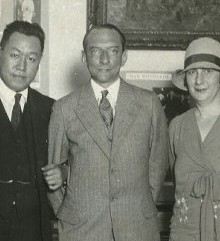
F. Ray Comstock was an American theatrical producer and theater operator. He pioneered the intimate musical comedy, staging several successful comedies at his Princess Theatre in Manhattan. He also produced spectacular musicals, variety shows and serious plays by authors such as Henrik Ibsen and Maxim Gorky.
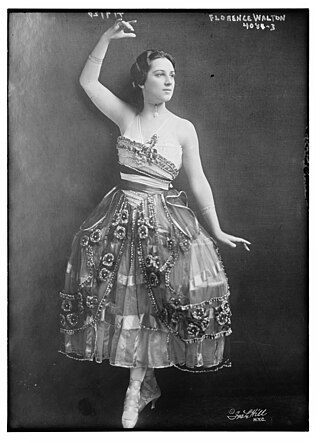
Florence Walton was a vaudeville dancer and cabaret performer in the 1910s and 1920s.

Good Times was a popular 1920 Broadway musical extravaganza, with music by Raymond Hubbell and a book by R. H. Burnside. Produced by Charles Dillingham, it debuted on August 9, 1920 at the Hippodrome in New York City and ran for 456 performances, the longest run for the 1920–21 season. It was sixth of Dillingham's elaborate spectacles at the Hippodrome.

Mitzi Hajos, sometimes written as Mizzi Hajos, was a Hungarian-born American stage performer, specializing in comic and musical roles.

Augusta Glosé, also seen as Augusta Glose, later Augusta Glose Leeds, was an American comedic actress and musical performer in vaudeville.

Florence Bindley was an American musical theatre, vaudeville, and music hall performer.

Kitty Doner was an American vaudeville performer. She was a male impersonator, actress, and dancer, specializing in boy roles, and later in life worked as a choreographer and television producer.

Grace Hazard, also credited as Grace Hazzard, was an American singer and actress in musical theatre and vaudeville.

Georgia O'Ramey was an American actress in comedies and musical theatre.




















